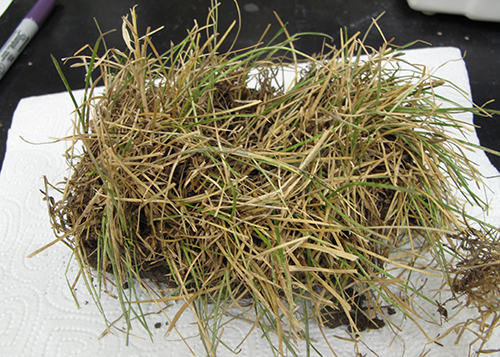Integrated Pest Management
Bank's Grass Mite
Oligonychus pratensis
Pest Description
- very tiny arachnids, less than 1/16 inch long, requiring a 10X lens to see the identifying features
- yellow to greenish tint with patchy black spots that cover the sides of the abdomen
- colonies often associated with webbing
Host Plants, Diet & Damage
- specialist of grasses, including turfgrasses and corn
- mite feeding removes chlorophyll from cells leading to stippling (yellowish-brown spots on turf), silver discoloration and eventual turf desiccation
- webbing produced by mites may also be evident
Biology, Life Cycle & Damaging Life Stage
- overwinter in soil, leaf litter and weeds as adults
- adults are active from late spring throughout the summer
- cream-colored, spherical eggs are laid in clusters on stems and leaves
- spider mites can have multiple, overlapping generations
- nymphs and adults are damaging
IPM Recommendations
- Reduce drought-stressed plants with proper irrigation, since drought conditions favor spider mites.
- Manage grassy weed hosts.
- Avoid broad-spectrum pesticides that suppress beneficial mite predators.
- Management with pesticides can be difficult.
- Apply a pyrethroid (bifenthrin; lambda-cyhalothrin) to suppress banks grass mites.




